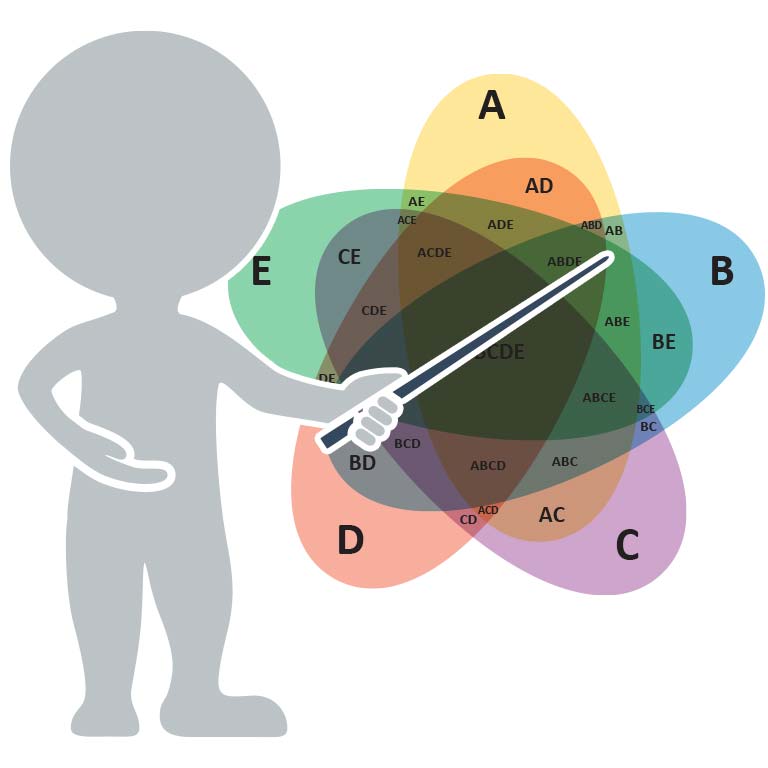Ok, you hear me verbally beating up on orchestra in-school programs quite a bit in this blog. However, that doesn’t mean I feel that in-school programs should be completely eliminated. On the contrary, I believe that in-school programs are a necessary component of a much broader overall education and outreach program.
That being said, I apply the same standards of efficiency for these programs as I do for all orchestra initiatives. So what do I mean by efficiency? All too often people believe that they are efficient once they found an easy way to do something. But my experience as a musician and an administrator has taught me that efficiency is rarely fast or easy. Instead, it is usually time consuming, demanding, and rarely the path of least resistance.
I am going to compare the efficiency and effectiveness of in-school programs from two orchestras: the Brooklyn Philharmonic and the Richmond (VA) Symphony. I selected the Brooklyn Philharmonic because previous articles have already allowed me to learn a great deal of detail regarding their in-school programs. I then selected Richmond given that I already knew about their in-school programs to some extent and I discovered it gave me the greatest amount of contrast for comparison. Additionally, they have similar annual budgets, nearly the same education mission statements, and an equal number of education employees.
So what is an in-school program? Essentially, it is when a group of orchestra musicians visit a local school to put on a performance. These can range from a simple duet to a full scale mini-opera complete with costumes and staging. As you read this article I think you’ll discover that although each orchestra has nearly identical mission goals, how they design their programs to meet these goals is quite different.
This evaluation will be examined in two parts: Part I includes interviews with the education directors at each orchestra followed by rundown comparison and conclusion. Part II will consist of excerpts from interviews with musicians in each orchestra and how they view their programs.
I conducted email and telephone interviews with the education directors from each orchestra: Ted Wiprud from Brooklyn and Marta Weldon from Richmond. The following questions were presented to both individuals:
1) How much of your education budget goes to each of your programs?
Ted: 52% of the approximately $430,000 education budget is devoted to the School Residency Initiative.
Marta: Money for educational expenses is allocated between the education department and operations department. I can’t give you a clear-cut answer on that.
2) Are salary payments included in that budget figure?
Ted: Yes, it includes per service payments to musicians and to teaching artists.
Marta: No, but the musician leader in each ensemble receives an additional payment above their regular salary for each [in-school] concert they perform.
3) What percentage of your overall orchestra budget is spent on the education department and/or education programs?
Ted: Education programs total 18% of [Brooklyn’s] overall 2003-2004 budget.
Marta: Again, money for educational expenses is allocated between the education department and operations department. I can’t give you a clear-cut answer on that. But 2003-2004 budget for the [Richmond] symphony is $4.07 million dollars.
4) How much of your in-school program budget is funded by grants or service fees?
Ted: The entire education budget is funded by grants and fees to schools.
Marta: We are paid by several entities to provide in-school services including school districts, school boards and cultural arts funding.
5) Do you charge the public schools any fee for in-school programs?
Ted: Yes. Fees to schools offset about 16% of projected in-school program costs in 2003-2004.
Marta: Yes, the funds we receive from participating schools are approximately $100,000. This roughly covers the basic per service salary for each musician; however, it doesn’t begin to cover the actual costs of taxes, benefits, administrative overhead, music, and stage management.
6) Are your orchestra musicians considered “teaching artists”?
Ted: No. Instead, we have a group of experienced composers as well as performers who make a career out of understanding how classrooms and their curricula work. They know how to make effective lessons that connect musical performance with learning standards in Music, English, Social Studies, and Math, depending on the grade and project.
Marta: Yes.
7) Who scripts the interactive dialog for your in-school programs?
Ted: They are usually scripted by whoever is emceeing the event; usually myself or one of our teaching artists.
Marta: The participating orchestra musicians script each event.
8) What is the extent of orchestra musician involvement concerning program development?
Ted: The musicians have considerable input on the script and flow of the program during scheduled rehearsals. They also extemporize in their remarks and in answers to questions from students while at each in-school performance. We are also developing an Education Corps of Brooklyn Philharmonic musicians with experience and interest in developing further expertise in playing for and with students. They may opt in to this group and we plan to provide periodic training in extra-musical skills.
Marta: Our education department comes up with topics, and then the musicians are responsible for writing the script material and selecting the music.
9) Do you pay any third party organizations to help develop your in-school programs?
Ted: We have a partnership with SchoolWorks Lab Inc. They do receive a fee, which is included in the $430,000 total education budget.
Marta: No. Although we did initiated a Teacher Advisory Committee that resulted in over 15 teachers from both elementary and secondary schools participating in discussions with our musicians and education staff.
Comparisons
It would appear that the in-school education program at Brooklyn is much more effective than the program at Richmond for the following reasons:
- The expenditures for the Brooklyn program are completely covered by grants and fees and are therefore not an additional drain on their orchestras financial resources (although this leads to a bit of the “tail wagging the dog” syndrome). As stated in question #5, Richmond’s program revenues don’t begin to cover the actual cost of their program.
- The Brooklyn program creates a higher quality product due to the fact their teaching artists posses unique specialties and qualifications in designing music education curricula. Although Richmond’s relying on the creativity of musicians to write material isn’t a bad thing, it does add an additional component to the musician’s already demanding job requirements (more to come on that point in part II).
- Although Richmond’s annual budget is $1.5 million dollars more than Brooklyn, Brooklyn is still able to design a seemingly higher quality product, while charging the schools more than 50% less than Richmond.
- The Brooklyn program director seem to take a much greater hands on role in the development and implementation of the in-school programs.
- By finding the funds to hire an third party partner with developing the programs, the Brooklyn program draws on a much more extensive knowledge base than does Richmond.
- Both organizations seem to do a good job at including school music teacher input from participating schools.
Conclusions
It appears that Brooklyn has a much more successful program than does Richmond. The pattern of hiring industry specialists to design their programs produces a much higher quality product when compared to Richmond’s program. Requiring the orchestra musicians to write concert scripts, select music, and emcee the events is too much of a burden in addition to their regular contracted performance duties. This process implemented at Richmond does not create the most conducive environment for developing a high quality in-school program.
I’m also impressed with the amount of “Leading from the Front” that Ted displays in Brooklyn. Not only is he running the operational side of the program and securing funds, but he is also at the head of developing the program curricula and emceeing events. By accomplishing the mission goals in such a fashion this builds confidence among musicians, the public school representatives, and education department staffers. In Richmond, this amount of direct involvement by the education director seemed to be absent.
I was disappointed that neither orchestra included any private schools in their programs. This would have been a nice way to legitimize the sincerity of community outreach goals as opposed to casting a shadow on the fact that these in-school programs may simply be pandering to government grant money. Music shouldn’t recognize the boundaries between church and state. Music is blind and should be made equally available for every child regardless of where they attend school.
In the end, Richmond could learn a great deal from Brooklyn (as could many orchestras I’m sure). Ideally, I believe that a program like the one at Brooklyn should exist as a separate non-profit organization which could develop quality in-school programs of varying degrees which orchestras could then purchase based on their budget. This would allow orchestras to lower their overall education expenditures while simultaneously maximize their outreach effectiveness. Now that would be efficient.
I invite you to come back tomorrow for Part II where we hear from the Brooklyn and Richmond musicians that perform these programs. And don’t be afraid to send an email and let me know what you think.


